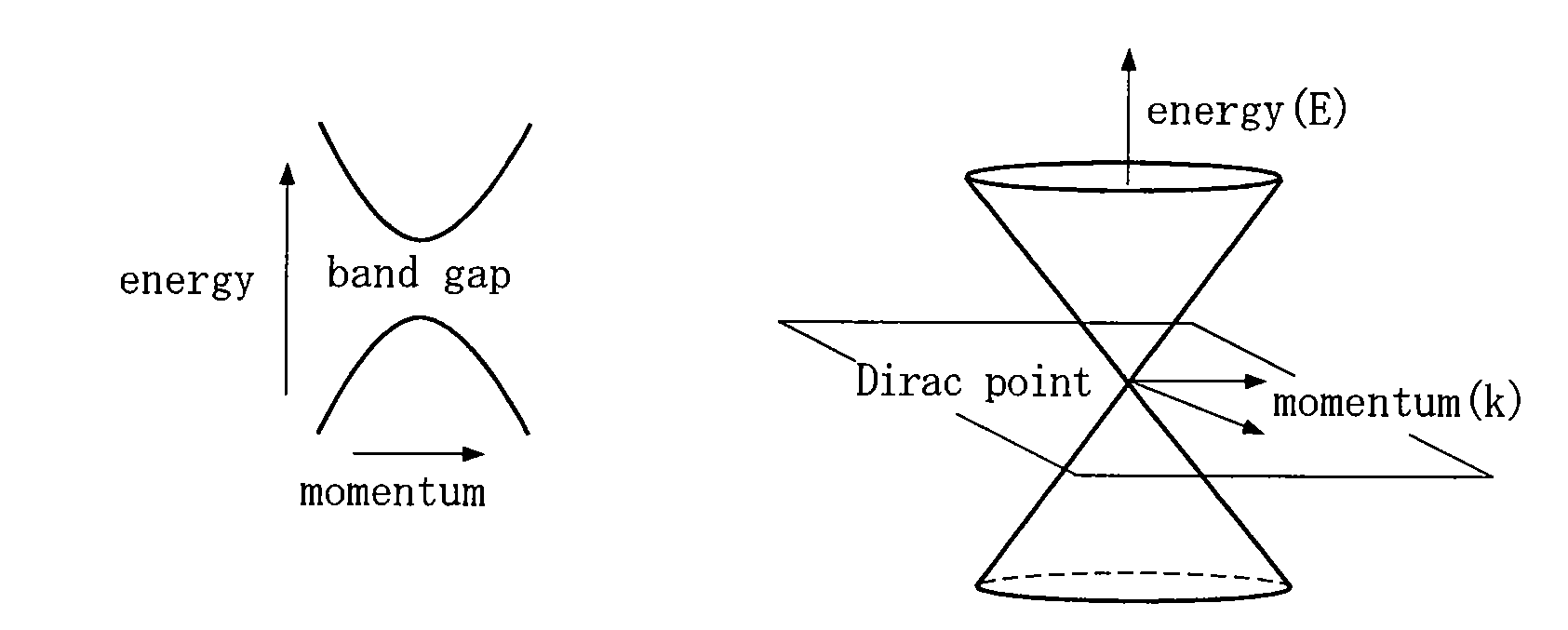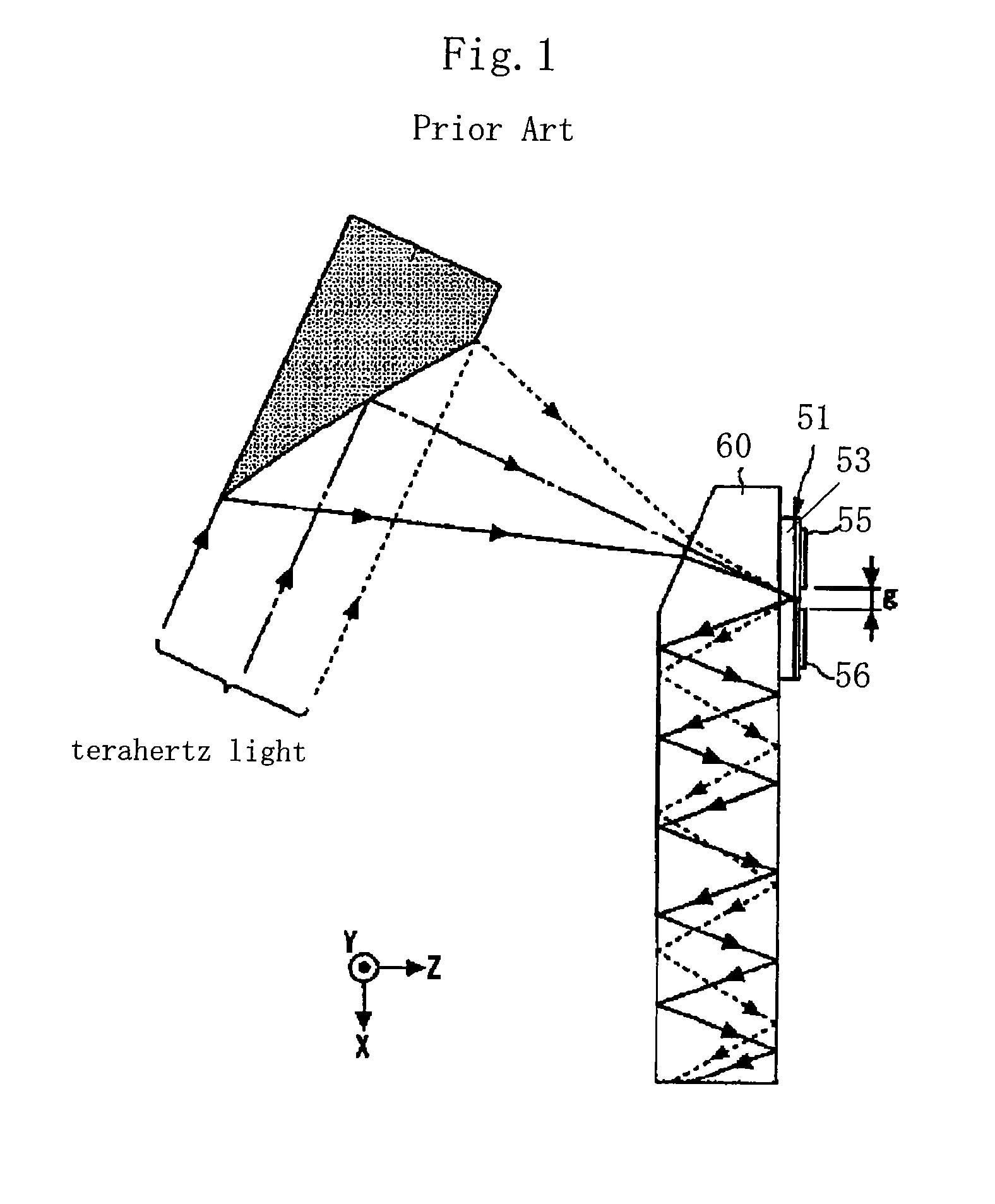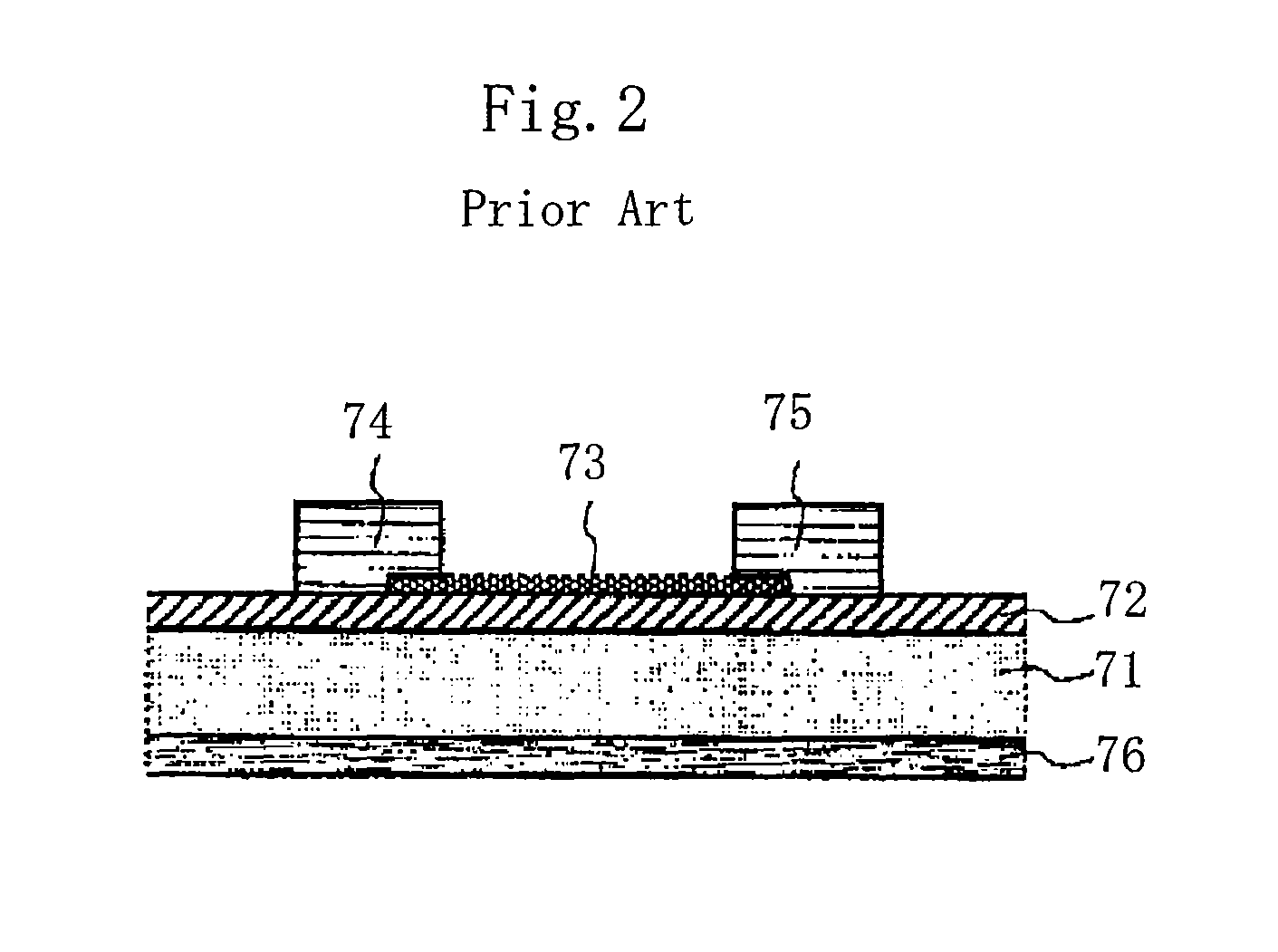Apparatus and method for detecting terahertz wave
a technology of terahertz light and apparatus, applied in the field of apparatus and method for detecting terahertz light, can solve the problems of inability to apply existing techniques, such as optics and electronics, to achieve the effect of wide frequency range, clear detection, and accurate measurement of terahertz light frequency
- Summary
- Abstract
- Description
- Claims
- Application Information
AI Technical Summary
Benefits of technology
Problems solved by technology
Method used
Image
Examples
first embodiment
[0132]In a single layer of graphene, since the carriers are Dirac fermions, the formation of Landau levels due to the magnetic field is greatly different from that in normal semiconductor materials in that the level spacing spans a considerably wide band from far-infrared to mid-infrared (between about 1 to 50 THz). Therefore, the exploration of the unique Landau level structure and the application thereof to the implementation of frequency-tunable terahertz detectors can be expected. Thus, the electron transport properties of graphene under the interaction with terahertz waves have been examined.
[0133]FIG. 9A and FIG. 9B are graphs showing first experimental results of the dependence of changes in electrical resistance on the magnetic field with respect to the irradiation of terahertz waves (at a temperature of 4.2K). FIG. 9A shows the result on graphene two-dimensional electron gas (2DEG), and FIG. 9B shows the result on normal GaAs / AlGaAs-2DEG. In this experiment, terahertz waves...
second embodiment
[0137]FIG. 10A and FIG. 10B are graphs showing second experimental results similar to those of the first embodiment. In this second embodiment, terahertz waves at a wavelength of 70.6 μm (where the photon energy is 17.6 meV and the frequency is 4.2 THz) were used.
[0138]It is apparent from FIG. 10B that any response signal (peak) indicative of absorption of electromagnetic waves was not observed in the GaAs-2DEG. If the effective mass of GaAs is assumed to be 0.067 m0 like in the first embodiment, the inter-Landau-level energies of the GaAs-2DEG are 0 to 8.5 meV. Since the photon energy (17.6 meV) of the irradiated terahertz waves is larger than the inter-Landau-level energy spacing of the GaAs-2DEG, it can be said that the result that no peak indicative of absorption of electromagnetic waves was not observed is reasonable.
[0139]In contrast, in the graphene 2DEG of FIG. 10A, a clear peak appears at 1.29 T. The static magnetic field when electromagnetic waves of 17.6 meV are absorbed ...
third embodiment
[0141]FIG. 11A and FIG. 11B are graphs showing third experimental results similar to those of the first embodiment. In this third embodiment, terahertz waves at a wavelength of 184 μm (where the photon energy is 6.7 meV and the frequency is 1.6 THz) were used.
[0142]It is apparent from FIG. 11B that a response signal (peak) indicative of absorption of electromagnetic waves in the GaAs-2DEG was observed in this example. If the effective mass of GaAs is assumed to be 0.067 m0 like in the first embodiment, the inter-Landau-level energy spacing of the GaAs-2DEG are 0 to 8.5 meV. On the other hand, since the photon energy (6.7 meV) of the irradiated terahertz waves falls within the above-mentioned range of inter-Landau-level energies, it can be said that the result that the peak indicative of absorption of electromagnetic waves was observed is reasonable.
[0143]In contrast, in the graphene 2DEG of FIG. 11A, a peak appears at 0.19 T. The static magnetic field when electromagnetic waves of 6...
PUM
 Login to View More
Login to View More Abstract
Description
Claims
Application Information
 Login to View More
Login to View More - R&D
- Intellectual Property
- Life Sciences
- Materials
- Tech Scout
- Unparalleled Data Quality
- Higher Quality Content
- 60% Fewer Hallucinations
Browse by: Latest US Patents, China's latest patents, Technical Efficacy Thesaurus, Application Domain, Technology Topic, Popular Technical Reports.
© 2025 PatSnap. All rights reserved.Legal|Privacy policy|Modern Slavery Act Transparency Statement|Sitemap|About US| Contact US: help@patsnap.com



